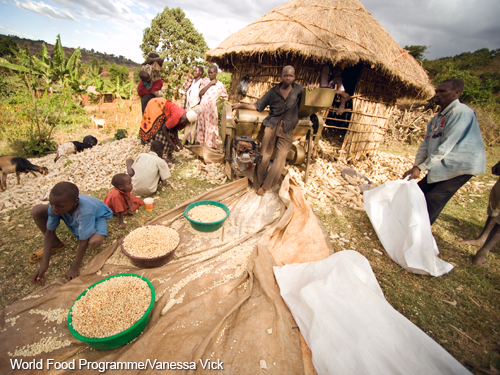
Across the globe, how are low- and middle-income countries faring in the ability to feed their populations? The International Food Security Assessment, released annually by the Economic Research Service (ERS), is the only report to provide a 10-year projection of food security in these countries. Since the 1980s, ERS has been conducting research and reporting on food security in countries most likely to face food security challenges.
To assess countries’ food security, ERS uses two key determinants: domestic food production and import capacity. In countries where domestic food production accounts for a large share of consumption (many in Sub Saharan Africa and Asia), increasing output of staple crops is crucial to improving food security. By comparison, in countries that rely on imports for a large share of their food supplies (many in North Africa and Latin America), the capacity to pay for imports is more important.
The 2014 report notes improvements to the current food security status of many countries, and identifies upcoming challenges in specific regions of the world.
Food security is projected to improve during 2014 in the 76 low- and middle-income countries studied. In particular, the number of food-insecure people is projected to fall 9 percent--from 539 million in 2013 to about 490 million in 2014. Food-insecure people are defined as those consuming less than the nutritional target of roughly 2,100 calories per day per person.
However, between 2014 and 2024, the number of food-insecure people is projected to increase by more than 100 million people. Sub Saharan Africa accounts for virtually all of the deterioration in food security over the next ten years, with the number of food-insecure people in the region projected to reach 346 million in 2024, up 34 percent from 2014.
The projected decline in SSA’s food security is actually driven by only a few countries. Most African countries are projected to continue on their path of improving or maintaining relatively high levels of food security. The information provided by the International Food Security Assessment is used in targeting countries for program funding and food aid – notably by USDA and USAID.
The good news is that expanded adoption of modern, higher yielding crop varieties could lead to significant improvement in the food security situation in SSA. Increased productivity across the region overall in the last decade, despite lagging behind the rest of the world, has reflected the adoption of new technologies. For example, in Nigeria, Benin, Ghana, Senegal, Malawi, and Zambia, a substantial share of crop area has been devoted to modern varieties in recent years. In each of these countries, grain yields have increased – hopefully an indicator of regional improvements to come.
See more in the International Food Security Assessment, 2014-2024.
